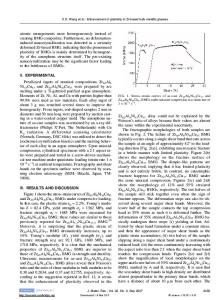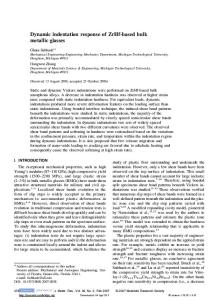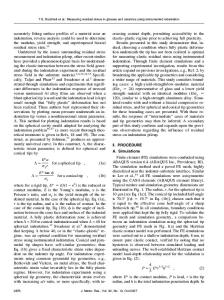Initial plasticity onset in Zr- and Hf-rich bulk metallic glasses during instrumented indentation
- PDF / 203,870 Bytes
- 5 Pages / 585 x 783 pts Page_size
- 61 Downloads / 434 Views
Sudden jumps in nanoindentation load-displacement curves of bulk metallic glasses (BMGs) signify the onset of plastic deformation. These events are investigated on varying compositions of Zr- and Hf-rich BMGs. Load-versus-displacement graphs for spherical indentations are analyzed to determine displacement, load, intensity of deformation, energy per volume, energy loss, and pressure corresponding to these key locations. Attention is focused on pressure, energy loss, and energy per volume at initial plasticity in response to varying strain rates, indenter tip radii, preload, and material composition. Energy loss was found to correlate with preload. The Zr-rich metallic glass was found to plastically deform in response to smaller loads than Hf-rich specimens.
I. INTRODUCTION
Noncrystalline metal, or metallic glass, is an exceptionally strong, lightweight, and noncorrosive material that was first realized in 1960.1 For almost three decades, only thin ribbons of metallic glass could be produced using extremely high cooling rates (∼107 K/s), with ribbons being unstable at ambient conditions. However, it was recently discovered that if a melt of five or six elements with dissimilar atomic radii is created with the correct proportions to form near-eutectic compositions, bulk-dimensioned, thermally stable metallic glass may be produced using commercially attainable cooling rates (
Data Loading...











